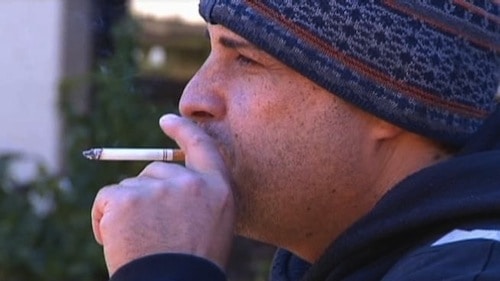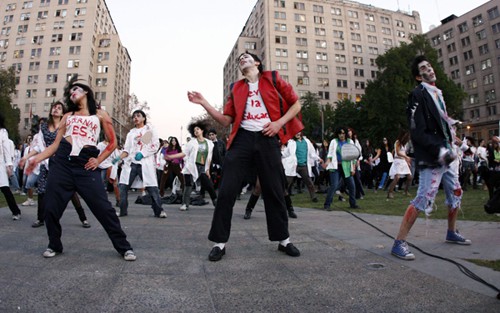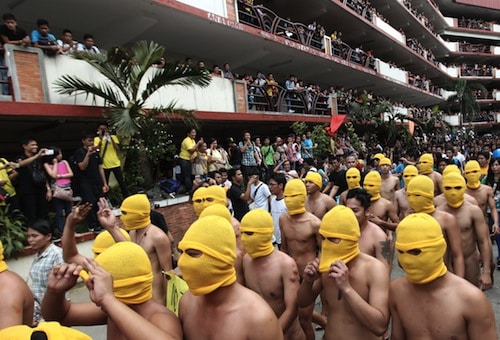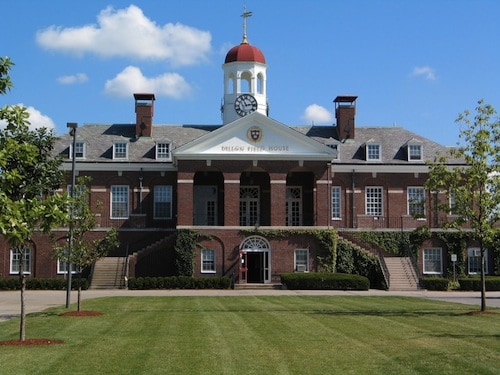Students have been kicking up a righteous fuss about educational and political issues for centuries. They’ve used strikes, occupations, and sit-ins, to name but a few methods, to make their various points.
A strike that took place at the University of Paris in 1229 is one of the earliest recorded examples in the West. The strike was prompted by an incident that saw the establishment authorize students being disciplined following rioting and a few of their numbers end up dead. After a remarkable two years of negotiations, the university became independent of the local authorities and protected by the Pope.
However, while strikes and demonstrations may be some of the most common forms of dissent, it’s no surprise that student protestors sometimes look for different ways to make their point, and these are sometimes ironic or just plain weird. Read on for ten examples of bizarre student protests.
10. Panda Dress-Up Protest – University of California Berkeley, USA
Panda Express is America’s largest Asian fast food chain, operating 1,500 branches throughout the country and Puerto Rico. However, when it proposed opening a new store on UC Berkeley’s Lower Sproul Plaza campus in early 2009, the move met with quite a bit of opposition. Students’ reasons for denying Panda Express at the college varied; some argued that the restaurant would damage the university’s reputation for sustainability, while others said that there were already fast food alternatives. Around 20 students even staged a protest outside the restaurant’s branch in El Cerrito, with one dressed up as a money-grabbing panda. Arthur Chang, a property manager for Panda Express, expressed surprise, saying, “Students are usually very excited about us.” Jordan Smith, UC Berkeley’s Store Operations Board chairman, pointed out that Panda Express would bring a welcome influx of money into the university but was less astonished by the resistance, acknowledging, “There’s opposition to any change on this campus.”
9. Kissing Protest – Santiago, Chile
A student protest against lowered education standards and rising costs is not that unusual, but one method of dissent employed in Chile on September 1, 2011 was certainly more out of the ordinary. Perhaps inspired by a similar smooching stunt that took place in July that same year, over 100 college students staged a kissing protest in Santiago as a less violent form of demonstration following a series of protests that had triggered violence. Pairs of students kissed en masse right before the city’s Metropolitan Cathedral, drawing substantial attention from onlookers, whose reactions ranged from astonishment to clapping. However, the point to this odd protest was brought home by a message on one couple’s placard, which read, “Love is free, education isn’t.” As a result of this and other actions, a new education fund was proposed and interest rates on student loans were slashed from six to two percent – although this measure failed to satisfy many protesters.
8. Underwear Protest – Quebec, Canada
Before this bizarre 2012 protest, students throughout the province of Quebec, Canada had already been on strike for a few months in response to a proposed hike in tuition fees. Overall, 193,000 students combined to create one of the largest and longest-running student protests in the country’s history; a protest that at one point drew up to 250,000 people to the streets of Montreal. One of the marches saw many students strip to protest in their underwear, for reasons that ranged from seeking to grab the attention of the Canadian government to flustering law enforcement officers and defying the mayor’s opposition to demonstrators wearing masks. It was a fun response to a serious issue, although one that came with a caution – as prior to the demo the Montreal police force warned protestors via Twitter that public nudity is against the law. Perhaps due at least in part to the opposition, the tuition fee hikes were put on hold.
7. Smoking Ban Protest – University of North Texas, USA
When a smoking ban was proposed at the University of North Texas (UNT) in late 2011, some students took a proactive approach. They formed the Young Americans for Liberty, portraying themselves online as “the continuation of Students for Ron Paul” – Paul being a 2012 Republican presidential nominee renowned for his libertarian attitude. The group showed its opposition to the proposal by giving out free cigarettes and requesting fellow students to sign a petition against the move, arguing that the university shouldn’t be able to enforce such a ban. Despite being a non-smoker, senior student Clint Townsend, one of the protest leaders, said, “I believe in individual liberty and personal responsibility.” At the time, the university had a ban on smoking in campus vehicles or within a 25-foot radius of any university building. And despite the protest, the UNT campus became a smoke-free zone in January 2013.
6. Thriller Protest – Santiago, Chile
One of the strangest of Chile’s ongoing student protests for fairer education standards took place in mid-2011, when students brought the King of Pop to Santiago. They were dressed as the iconic horror creations from Michael Jackson’s famous “Thriller” music video and recreated the iconic dance routine outside the palace of president Sebastian Pinera. However, this fun stunt had a relevant metaphor behind it: as one student said, “Public education is dying, so we took this Michael Jackson creation and we united to this movement.” It certainly made the nation sit up and watch, as YouTube videos of the performance proved highly popular across the country. The protest was part of a concerted campaign that used social media to further push the students’ views concerning higher education reforms without the censorship of more traditional outlets.
5. Naked Yellow Balaclava Protest – Polytechnic University of the Philippines, Manila, Philippines
Students in the Philippines are no strangers to unusual forms of protest, with some having stripped down in 2005 following what they felt was a lack of educational funding in the country. This method was used again in 2012, when 25 male students in Manila’s Polytechnic University of the Philippines protested completely in the nude – apart from the distinctive yellow balaclavas they wore. The stunt was arranged to try to compel the government to block an amateur anti-Islam film called Innocence of Muslims, which had already triggered violent protests in other nations. Marley Cabase, the leader of the Alpha Phi Omega fraternity behind the protest, explained, “We condemn this film that insults Islam and urge everyone to respect all religions.” While the Philippines’ Supreme Court had prohibited any public showing of the film, this did not stop it from being viewed online.
4. Sit-Out Library Protest – University of South Florida, USA
In August 2013 students at the University of South Florida decided not to stage a sit-in, instead opting for a sit-out following a decrease in the college library’s opening hours. The library’s week hours were cut from 24 hours to 7:30 a.m. to midnight, and the move angered students, who were unable to access the facility during the day owing to commitments to work or their studies. This was seen as putting them at a disadvantage with their studies since, as one student explained to the Tampa Bay Times, “The library is crucial to our academic success.” Approximately 30 students took matters into their own hands by camping outside the library doors from midnight to daybreak, while more than 1,600 individuals signed a petition against the reduced hours. The university eventually relented and has reinstated the 24-hour access to the library. However, this prompted one student to ask, “Why did it take students coming out and sitting outside the library for 12 hours before they did something about it?”
3. Die-In – University of Sheffield, Sheffield, U.K.
Image Source
In March 2013 students at England’s University of Sheffield invaded a careers fair and staged a protest against one of the exhibitors by playing dead. The stunt, which the Fund Education Not War group claimed responsibility for, was an inventive move aimed against Thales, an arms and military vehicle manufacturer. The move was staged to oppose what the protestors called the university’s “continued liaison with arms companies responsible for the murder of innocents around the world.” Students lay around the Thales stand at the fair clad in fake blood-soaked shirts, and although the protest was a peaceful one, they were eventually removed with force by members of the university’s security team. A similar event against Thales took place at the University of Sheffield in 2011, that time organized by Sheffield Occupation.
2. Naked Protest – University of Kaposvár, Hungary
Students at Hungary’s University of Kaposvár embraced their exhibitionist side in October 2013 when the institution decided to restrict what they could wear on campus. From the beginning of the month, the university prohibited the wearing of short skirts, flip-flops and too much make-up and also requested that students keep their fingernails and hair in a presentable state. In addition, officials implemented a stricter dress code for students, urging men to wear dark footwear and blazers and women to be dressed in blouses, jackets and pants or more modest skirts. The idea for the students’ protest was inspired by the university’s decision to allow lighter clothing during hotter spells, although they did give it a cheeky twist. As one student put it, “The classroom was so warm we removed some clothing as is permitted.”
1. The Great Butter Rebellion – Harvard University, USA
In 1766 the infamous Great Butter Rebellion rocked Harvard University. It is said to be the earliest documented student demonstration in America’s history. Using the title the “Sons of Harvard,” the protestors demonstrated against the quality of food served in the college dining rooms, which had been an issue for decades. However, one serving of rancid butter famously led to student Asa Dunbar shouting, “Behold, our butter stinketh! Give us therefore butter that stinketh not.” It became the mantra for the protest, which led to a mass walkout. In response to the insurrection, the university subsequently suspended half of the students, but this had little effect. No instigator was ever given up by their peers, although the individuals responsible eventually apologized to the Board of Overseers and the matter was settled.











